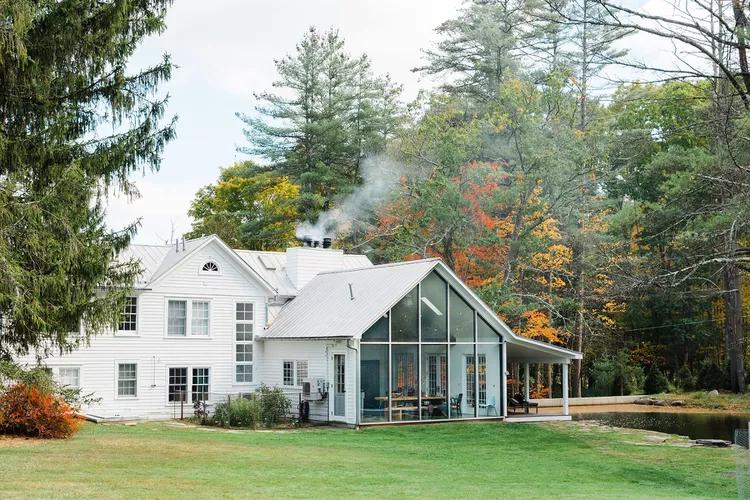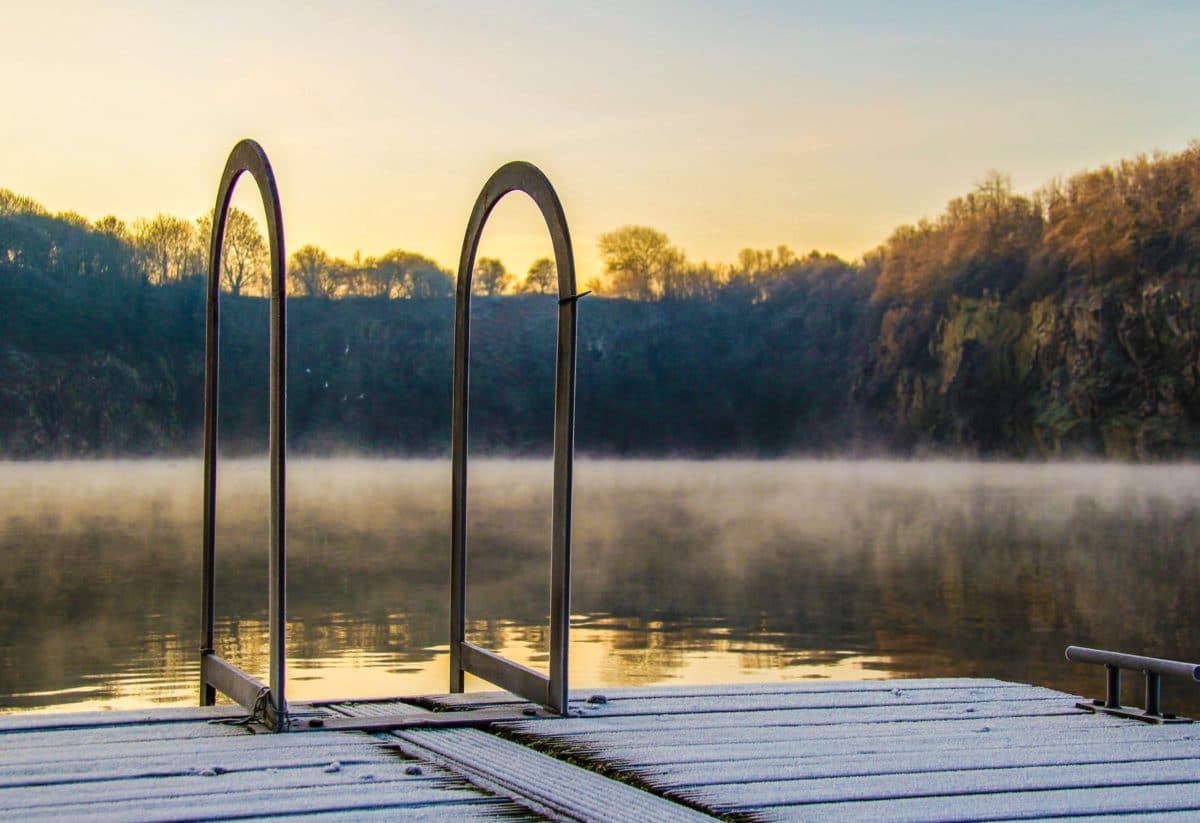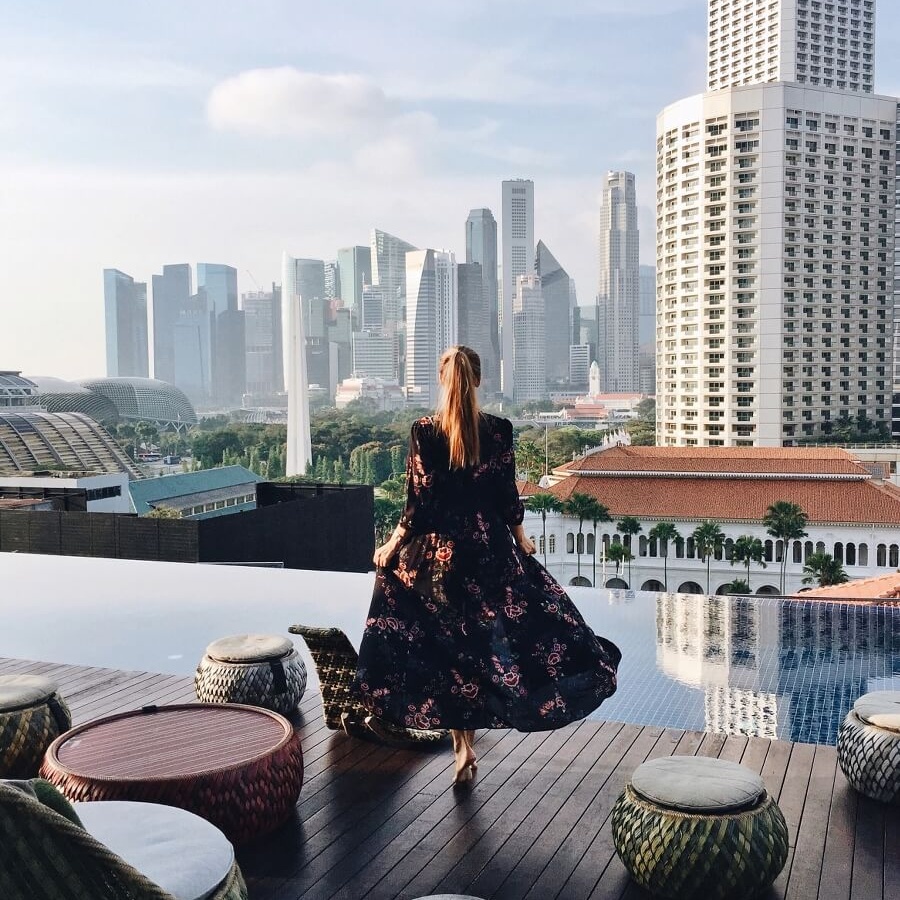1. Discover the Floating Farmhouse
2. Renovation Journey
3. Architectural Marvel
4. A Joyous Experience
It’s the perfect blend of old and new. And it’s waiting just for you.
Fact checked by
Jillian Dara
If you’re going to take the time to go on vacation, you might as well ensure that every element of your getaway is the best of the best. That includes your accommodations, too. If you’re looking to take a break in the Catskills, there’s nowhere better than the Floating Farmhouse.
The famed vacation rental, located just two hours north of New York City, is known for its gorgeous architecture and light-filled spaces, designed by its owner, former advertising copywriter and self-taught designer, Tom Givone.

“Having just restored my first home, a derelict 1882 Victorian row house in historic Harlem, a friend tipped me off about all these marvelous 1800s farmsteads going to seed in Sullivan County, on the western edge of the Catskill Mountains,” Givone describes his renovation journey. “So, I started poking around.”
By 2007, he had resuscitated several old farmhouses in the area, experimenting with different designs and materials, before stumbling upon the Floating Farmhouse, which he characterizes as “a rambling wreck perched at the edge of a pristine Catskills creek, lapping against the crumbling manor home like an ancient moat.” Consequently, he left a note on the door, asking if the owner might be interested in selling.
“This one called me back,” Givone recalls.

Upon beginning the renovation, Givone discovered the home had plenty of issues, including rotted siding, missing windowpanes, and three feet of water in the basement.
“Floating Farmhouse was literally a sinking ship when I first discovered it,” he notes. “But I had a hunch that the good stuff was lurking beneath all those layers.”
The Best Small Towns in the Catskills for Hiking, Boutique Hotels, and Breweries
Givone brought his vision to life by combining what he calls “primitive and industrial architecture” to enhance and contrast one another. He mixed ancient hand-hewn beams, wide-plank floors, and original wavy-glass windows with swathes of skyscraper glass, corten steel, and polished concrete.
“The design process was hands-on and intuitive, and very much rooted in ‘place,’ directly inspired by the home’s uniquely spectacular setting and history,” he elaborates. “Hence, a towering wall of glass was conceived to best capture dramatic views of the creek, meadow, apple trees, and barns.”

Speaking of the great outdoors, it found its way inside the house, too. Givone says he felled 11 ancient pine trees on the property, but used every piece to create something in the home, including beadboard ceilings and the home’s wainscoting. The interiors also include pieces by Resource Furniture, who worked hand in hand with Givone to round out his vision of creating a country farmhouse that contrasts with industrial, commercial materials. The pieces include the home’s rather popular wall beds, complete with scannable QR codes to instruct guests on how to use the furniture.
“People love the wall beds,” Givone mentions. “They’re excited to see these new pieces and how they work in an old place. They’re modern, but they’re not too modern. They’re very clean, and that’s the key. There are enough modern elements here that Resource Furniture is just at home in the Floating Farmhouse,” he concludes.

Start to finish, Givone describes the project as a five-year labor of love transformation.
“As always, the intent was to rescue the home and property from oblivion, restore the original details, and reinterpret it with a modernist sensibility,” he shares. “What I did not anticipate was how rewarding it would be to share the Floating Farmhouse, and by extension my life’s work, with others in such a personal way. It truly is a joyous place, and having guests experience that same joy I felt upon first discovering it is a gift that keeps on giving. As guests see it for the first time, so do I, again and again.”
See more about the home and check your stay here.




